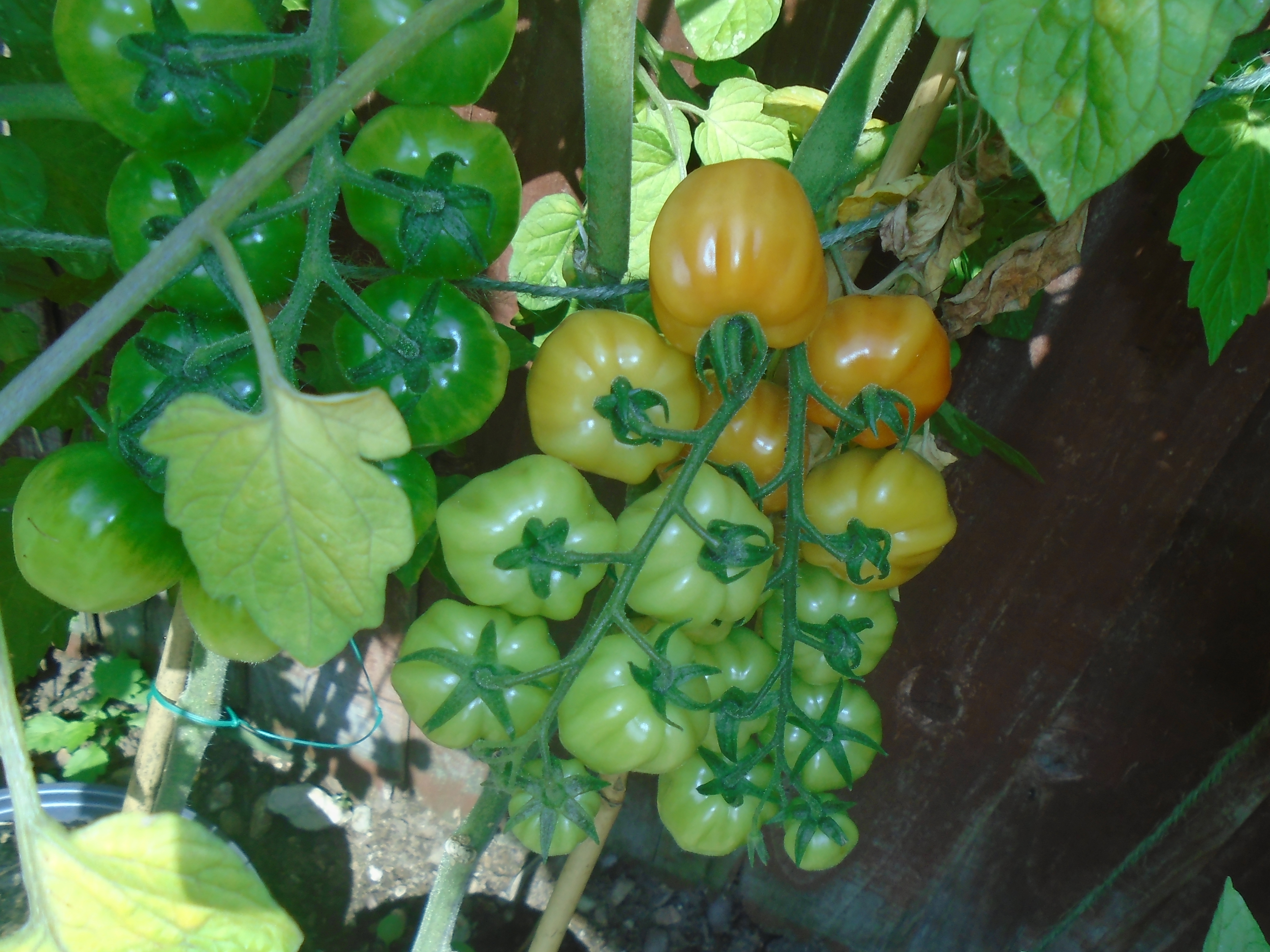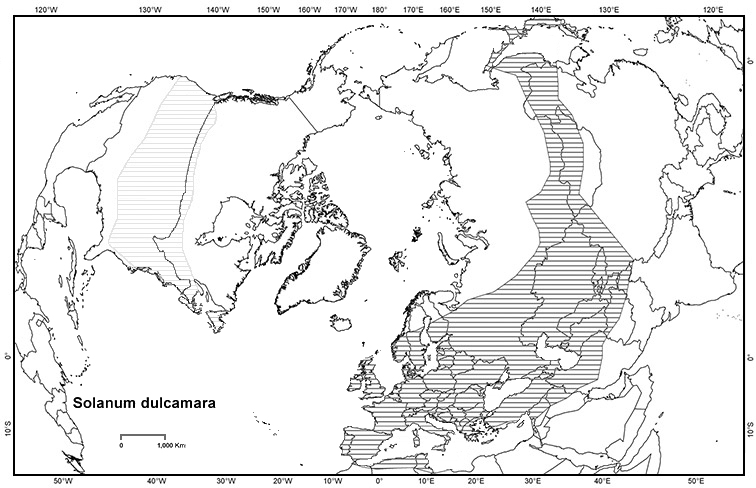|
Solanum
''Solanum'' is a large and diverse genus of flowering plants, which include three food crops of high economic importance: the potato, the tomato and the eggplant (aubergine, brinjal). It is the largest genus in the nightshade family Solanaceae, comprising around 1,500 species. It also contains the so-called horse nettles (unrelated to the genus of true nettles, ''Urtica''), as well as numerous plants cultivated for their ornamental flowers and fruit. ''Solanum'' species show a wide range of growth habits, such as annuals and perennials, vines, subshrubs, shrubs, and small trees. Many formerly independent genera like '' Lycopersicon'' (the tomatoes) and '' Cyphomandra'' are now included in ''Solanum'' as subgenera or sections. Thus, the genus today contains roughly 1,500–2,000 species. Name The generic name was first used by Pliny the Elder (AD 23–79) for a plant also known as , most likely ''S. nigrum''. Its derivation is uncertain, possibly stemming from the Latin ... [...More Info...] [...Related Items...] OR: [Wikipedia] [Google] [Baidu] |
Solanum Lycopersicum Tomkin 1
''Solanum'' is a large and diverse genus of flowering plants, which include three food crops of high economic importance: the potato, the tomato and the eggplant (aubergine, brinjal). It is the largest genus in the nightshade family Solanaceae, comprising around 1,500 species. It also contains the so-called horse nettles (unrelated to the genus of true nettles, ''Urtica''), as well as numerous plants cultivated for their ornamental flowers and fruit. ''Solanum'' species show a wide range of growth habits, such as annuals and perennials, vines, subshrubs, shrubs, and small trees. Many formerly independent genera like '' Lycopersicon'' (the tomatoes) and ''Cyphomandra'' are now included in ''Solanum'' as subgenera or sections. Thus, the genus today contains roughly 1,500–2,000 species. Name The generic name was first used by Pliny the Elder (AD 23–79) for a plant also known as , most likely ''S. nigrum''. Its derivation is uncertain, possibly stemming from the Latin word , ... [...More Info...] [...Related Items...] OR: [Wikipedia] [Google] [Baidu] |
Solanum Nigrum
''Solanum nigrum'', the European black nightshade or simply black nightshade or blackberry nightshade, is a species of flowering plant in the family Solanaceae, native to Eurasia and introduced in the Americas, Australasia, and South Africa. Ripe berries and cooked leaves of edible strains are used as food in some locales, and plant parts are used as a traditional medicine. Some other species may also be referred to as "black nightshade". ''Solanum nigrum'' has been recorded from deposits of the Paleolithic and Mesolithic era of ancient Great Britain, Britain and it is suggested by the botanist and ecologist Edward James Salisbury, Edward Salisbury that it was part of the native flora there before Neolithic agriculture emerged. The species was mentioned by Pliny the Elder in the first century AD and by the great herbalists, including Dioscorides. In 1753, Carl Linnaeus described six varieties of ''Solanum nigrum'' in ''Species Plantarum''. Description Black nightshade is a comm ... [...More Info...] [...Related Items...] OR: [Wikipedia] [Google] [Baidu] |
Cyphomandra
''Cyphomandra'' was a formerly accepted genus in the plant family Solanaceae (the nightshades and relative). It used to contain about 35 species native to the Americas from Mexico southwards to Northern Argentina. Recent authors have treated ''Cyphomandra'' as a clade within the genus ''Solanum'' rather than as a separate genus, uniting the members of the old genus with some other ''Solanum''. This lineage is one among a group related to part of the traditional subgenus ''Leptostemonum''. Thus, if it is preferred to retain the taxon, ''Cyphomandra'' is probably best considered a section in ''Solanum'' subgenus ''Leptostemonum''. Most grow as shrubs or small trees 2 or 3 metres in height. The best known species is the widely cultivated Tamarillo or tree tomato, but a number of the others are also cultivated as garden plants because of their attractive flowers or fruits. Several other species (e.g. '' S. cajanumense, S. circinatum, S. sibundoyense'') also have fruits that ar ... [...More Info...] [...Related Items...] OR: [Wikipedia] [Google] [Baidu] |
Eggplant
Eggplant (American English, US, Canadian English, CA, Australian English, AU, Philippine English, PH), aubergine (British English, UK, Hiberno English, IE, New Zealand English, NZ), brinjal (Indian English, IN, Singapore English, SG, Malaysian English, MY, South African English, ZA, Sri Lankan English, SLE), or baigan (Languages of India, IN, Caribbean English, GY) is a plant species in the Solanaceae, nightshade family Solanaceae. ''Solanum melongena'' is grown worldwide for its edible fruit, typically used as a vegetable in cooking. Most commonly purple, the spongy, absorbent fruit is used in List of cuisines, several cuisines. It is a berry (botany), berry by botany, botanical definition. As a member of the genus ''Solanum'', it is related to the tomato, chili pepper, and potato, although those are of the Americas region while the eggplant is of the Eurasia region. Like the tomato, its skin and seeds can be eaten, but it is usually eaten cooked. Eggplant is nutritionally ... [...More Info...] [...Related Items...] OR: [Wikipedia] [Google] [Baidu] |
Solanum Dulcamara
''Solanum dulcamara'' is a species of vine in the genus ''Solanum'' (which also includes the potato and the tomato) of the family Solanaceae. Common names include bittersweet, bittersweet nightshade, bitter nightshade, blue bindweed, Amara Dulcis, climbing nightshade, felonwort, fellenwort, felonwood, poisonberry, poisonflower, scarlet berry, snakeberry, trailing bittersweet, trailing nightshade, violet bloom, and woody nightshade. It is native to Europe and Asia, and widely naturalised elsewhere, including North America. Overview It occurs in a very wide range of habitats, from woodlands to scrubland, hedges and marshes. ''Solanum dulcamara'' is a semi-woody herbaceous perennial vine, which scrambles over other plants, capable of reaching a height of 4 m where suitable support is available, but more often 1–2 m high. The leaves are 4–12 cm long, roughly arrowhead-shaped, and often lobed at the base. The flowers are in loose clusters of 3–20, 1–1.5 cm acro ... [...More Info...] [...Related Items...] OR: [Wikipedia] [Google] [Baidu] |
Potato
The potato () is a starchy tuberous vegetable native to the Americas that is consumed as a staple food in many parts of the world. Potatoes are underground stem tubers of the plant ''Solanum tuberosum'', a perennial in the nightshade family Solanaceae. Wild potato species can be found from the southern United States to southern Chile. Genetic studies show that the cultivated potato has a single origin, in the area of present-day southern Peru and extreme northwestern Bolivia. Potatoes were domesticated there about 7,000–10,000 years ago from a species in the '' S. brevicaule'' complex. Many varieties of the potato are cultivated in the Andes region of South America, where the species is indigenous. The Spanish introduced potatoes to Europe in the second half of the 16th century from the Americas. They are a staple food in many parts of the world and an integral part of much of the world's food supply. Following millennia of selective breeding, there are now over 5 ... [...More Info...] [...Related Items...] OR: [Wikipedia] [Google] [Baidu] |
Carolina Horsenettle
''Solanum carolinense'', the Carolina horsenettle, is not a Urtica, true nettle, but a member of the Solanaceae, or nightshade family. It is a Perennial plant, perennial herbaceous plant, native to the southeastern United States, though its range has expanded throughout much of temperate North America. The plant is an Invasive species, invasive in parts of Europe, Asia, Africa and Australia. The stem and undersides of larger leaf veins are covered with prickles. "Horsenettle" is also written "horse nettle" or "horse-nettle", though USDA publications usually use the one-word form. Though there are other horsenettle nightshades, ''S. carolinense'' is the species most commonly called ''"the'' horsenettle". Other common names include radical weed, sand brier or briar, bull nettle, tread-softly, Solanum mammosum ("apple of Sodom"), devil's tomato and wild tomato. Description Leaf shape, Leaves are alternate, elliptic-oblong to oval, long, and each is irregularly lobed or coarsel ... [...More Info...] [...Related Items...] OR: [Wikipedia] [Google] [Baidu] |
Tomato
The tomato (, ), ''Solanum lycopersicum'', is a plant whose fruit is an edible Berry (botany), berry that is eaten as a vegetable. The tomato is a member of the nightshade family that includes tobacco, potato, and chili peppers. It originated from and was domesticated in western South America. It was introduced to the Old World by the Spanish in the Columbian exchange in the 16th century. Tomato plants are vines, largely Annual plant, annual and vulnerable to frost, though sometimes living longer in greenhouses. The flowers are able to self-fertilise. Modern varieties have been bred to ripen uniformly red, in a process that has impaired the fruit's sweetness and flavor. There are thousands of cultivars, varying in size, color, shape, and flavor. Tomatoes are attacked by many insect pests and nematodes, and are subject to diseases caused by viruses and by mildew and blight fungi. The tomato has a strong savoury umami flavor, and is an important ingredient in cuisines around ... [...More Info...] [...Related Items...] OR: [Wikipedia] [Google] [Baidu] |
Lycopersicon
''Lycopersicon'' was a genus in the flowering plant family Solanaceae (the nightshades and relatives). It contained about 13 species in the tomato group of nightshades. First removed from the genus ''Solanum'' by Philip Miller in 1754, its removal leaves the latter genus paraphyletic, so modern botanists generally accept the names in ''Solanum''. The name ''Lycopersicon'' (from Greek ''λυκοπέρσικον'' meaning "wolf peach") is still used by gardeners, farmers, and seed companies. Collectively, the species in this group apart from the common cultivated plant are called wild tomatoes. Cladistic analysis of DNA sequence data confirms ''Lycopersicon'' as a clade that is part of a lineage of nightshades also including the potato (''S. tuberosum''). If it is desired to continue use of ''Lycopersicon'', it can be held as a section inside the potato-tomato subgenus whose name has to be determined in accordance with the ICBN.Solanaceae Source 008br>Phylogeny Retrieved 2008-OCT-0 ... [...More Info...] [...Related Items...] OR: [Wikipedia] [Google] [Baidu] |
Nightshade
Solanaceae (), commonly known as the nightshades, is a family of flowering plants in the order Solanales. It contains approximately 2,700 species, several of which are used as agricultural crops, medicinal plants, and ornamental plants. Many members of the family have high alkaloid contents, making some highly toxic, but many—such as tomatoes, potatoes, eggplants, and peppers—are commonly used in food. Originating in South America, Solanaceae now inhabits every continent on Earth except Antarctica. After the K—Pg extinction event they rapidly diversified and have adapted to live in deserts, tundras, rainforests, plains, and highlands, and taken on wide range of forms including trees, vines, shrubs, and epiphytes. Nearly 80% of all nightshades are included in the subfamily Solanoideae, most of which are members of the type genus ''Solanum''. Most taxonomists recognize six other subfamilies: Cestroideae, Goetzeoideae, Nicotianoideae, Petunioideae, Schizanthoideae, and ... [...More Info...] [...Related Items...] OR: [Wikipedia] [Google] [Baidu] |
Solanum Seaforthianum
''Solanum seaforthianum'', the Brazilian nightshade, is a flowering evergreen vine of the family Solanaceae native to tropical South America. As a member of the ''Solanum'' genus, it is related to such plants as the tomato and potato. It is characterized by clusters of four to seven leaves and can climb to a height of given enough room. It blooms in the mid to late summer with clusters of star-shaped purple inflorescence followed by scarlet marble-sized berries. The plant is highly heat resistant, but cannot tolerate frost conditions. The plant contains modest amounts of various tropane alkaloids such as atropine, scopolamine and hyoscyamine and should be considered mildly toxic and inedible. Promising molluscicidal and schistosomicidal activities were displayed for the ''S. seaforthianum'' extracts and fractions which are attributed to the glycoalkaloid content. The species has become widely naturalised outside its native range and is an invasive species in Australia, Africa ... [...More Info...] [...Related Items...] OR: [Wikipedia] [Google] [Baidu] |









